Zixuan Pan
Rethinking Medical Anomaly Detection in Brain MRI: An Image Quality Assessment Perspective
Aug 15, 2024



Abstract:Reconstruction-based methods, particularly those leveraging autoencoders, have been widely adopted to perform anomaly detection in brain MRI. While most existing works try to improve detection accuracy by proposing new model structures or algorithms, we tackle the problem through image quality assessment, an underexplored perspective in the field. We propose a fusion quality loss function that combines Structural Similarity Index Measure loss with l1 loss, offering a more comprehensive evaluation of reconstruction quality. Additionally, we introduce a data pre-processing strategy that enhances the average intensity ratio (AIR) between normal and abnormal regions, further improving the distinction of anomalies. By fusing the aforementioned two methods, we devise the image quality assessment (IQA) approach. The proposed IQA approach achieves significant improvements (>10%) in terms of Dice coefficient (DICE) and Area Under the Precision-Recall Curve (AUPRC) on the BraTS21 (T2, FLAIR) and MSULB datasets when compared with state-of-the-art methods. These results highlight the importance of invoking the comprehensive image quality assessment in medical anomaly detection and provide a new perspective for future research in this field.
Empirical Guidelines for Deploying LLMs onto Resource-constrained Edge Devices
Jun 06, 2024


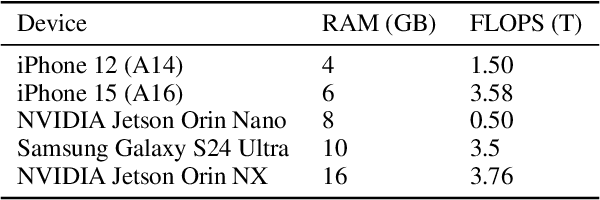
Abstract:The scaling laws have become the de facto guidelines for designing large language models (LLMs), but they were studied under the assumption of unlimited computing resources for both training and inference. As LLMs are increasingly used as personalized intelligent assistants, their customization (i.e., learning through fine-tuning) and deployment onto resource-constrained edge devices will become more and more prevalent. An urging but open question is how a resource-constrained computing environment would affect the design choices for a personalized LLM. We study this problem empirically in this work. In particular, we consider the tradeoffs among a number of key design factors and their intertwined impacts on learning efficiency and accuracy. The factors include the learning methods for LLM customization, the amount of personalized data used for learning customization, the types and sizes of LLMs, the compression methods of LLMs, the amount of time afforded to learn, and the difficulty levels of the target use cases. Through extensive experimentation and benchmarking, we draw a number of surprisingly insightful guidelines for deploying LLMs onto resource-constrained devices. For example, an optimal choice between parameter learning and RAG may vary depending on the difficulty of the downstream task, the longer fine-tuning time does not necessarily help the model, and a compressed LLM may be a better choice than an uncompressed LLM to learn from limited personalized data.
Efficient Vision-Language Pre-training by Cluster Masking
May 14, 2024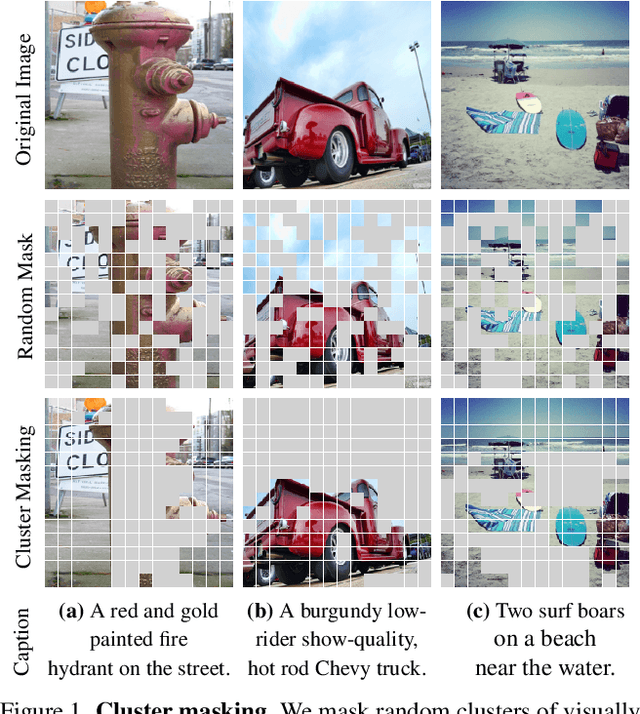

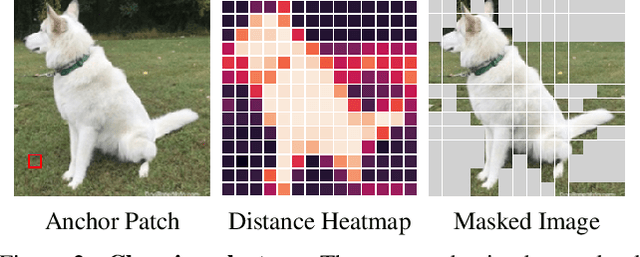

Abstract:We propose a simple strategy for masking image patches during visual-language contrastive learning that improves the quality of the learned representations and the training speed. During each iteration of training, we randomly mask clusters of visually similar image patches, as measured by their raw pixel intensities. This provides an extra learning signal, beyond the contrastive training itself, since it forces a model to predict words for masked visual structures solely from context. It also speeds up training by reducing the amount of data used in each image. We evaluate the effectiveness of our model by pre-training on a number of benchmarks, finding that it outperforms other masking strategies, such as FLIP, on the quality of the learned representation.
Masked Diffusion as Self-supervised Representation Learner
Aug 27, 2023Abstract:Denoising diffusion probabilistic models have recently demonstrated state-of-the-art generative performance and been used as strong pixel-level representation learners. This paper decomposes the interrelation between the generative capability and representation learning ability inherent in diffusion models. We present masked diffusion model (MDM), a scalable self-supervised representation learner that substitutes the conventional additive Gaussian noise of traditional diffusion with a masking mechanism. Our proposed approach convincingly surpasses prior benchmarks, demonstrating remarkable advancements in both medical and natural image semantic segmentation tasks, particularly within the context of few-shot scenario.
Discovering Intrinsic Reward with Contrastive Random Walk
Apr 23, 2022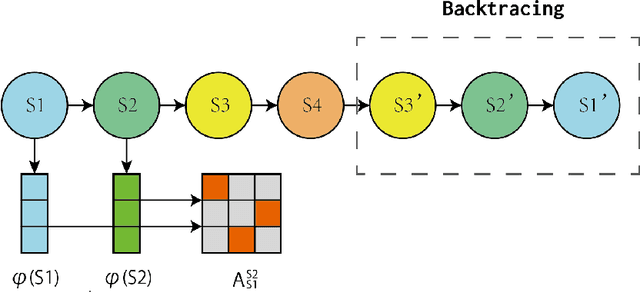
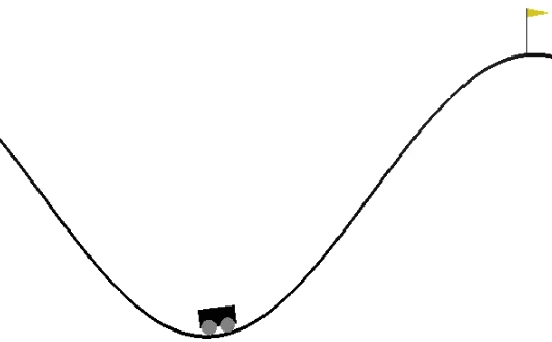
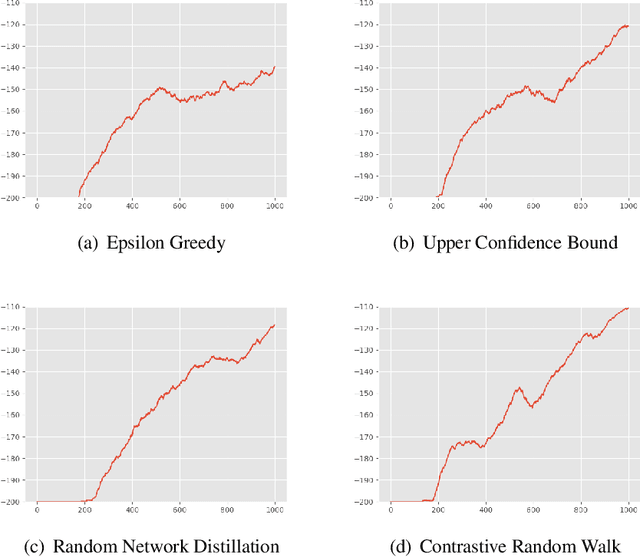

Abstract:The aim of this paper is to demonstrate the efficacy of using Contrastive Random Walk as a curiosity method to achieve faster convergence to the optimal policy.Contrastive Random Walk defines the transition matrix of a random walk with the help of neural networks. It learns a meaningful state representation with a closed loop. The loss of Contrastive Random Walk serves as an intrinsic reward and is added to the environment reward. Our method works well in non-tabular sparse reward scenarios, in the sense that our method receives the highest reward within the same iterations compared to other methods. Meanwhile, Contrastive Random Walk is more robust. The performance doesn't change much with different random initialization of environments. We also find that adaptive restart and appropriate temperature are crucial to the performance of Contrastive Random Walk.
 Add to Chrome
Add to Chrome Add to Firefox
Add to Firefox Add to Edge
Add to Edge